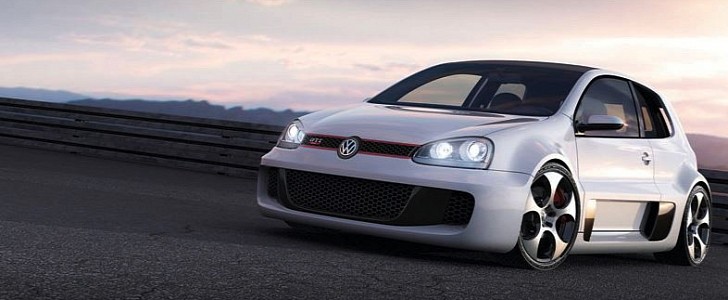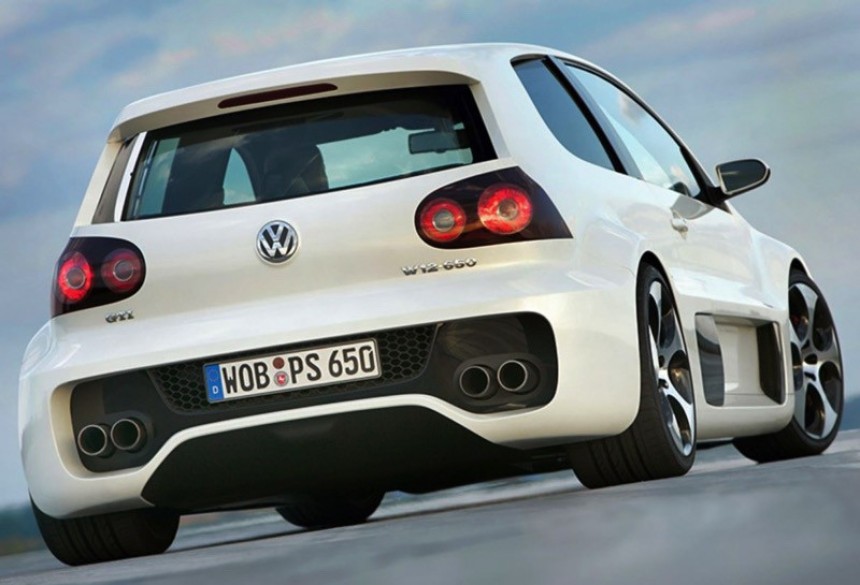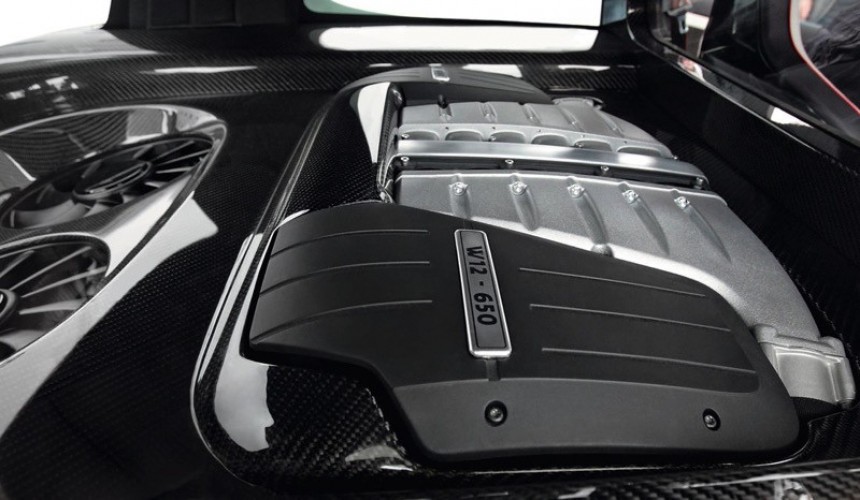The Volkswagen (VW) Golf, also known as Rabbit in the US, is a compact car built by the German automotive manufacturer since 1974. The original Mk1 Golf was intended to replace the Beetle and its rear-engined rear-wheel-drive architecture with a front-engined front-wheel drive alternative. Historically, the Golf is VW's best-selling model ever and is one of the most successful vehicles worldwide.
The Golf GTI is the performance variant of the model and enjoys a large fanbase among motorsport enthusiasts. The world's first hot hatch debuted at Frankfurt Motor Show in September of 1975 and since then enjoyed decades of sporty fun that continues even to this day.
The automaker recognized and appreciated the loyal cult following and, back in 2007, wanted to surprise the model devotees present at the largest festival of GTI owners held at Wörthersee, Austria, with an exclusive build, purely made out of passion and consideration for the legend that the model has become over the years.
The concept was mechanically fully functional, and it was designed and constructed in just two months prior to the aforementioned automotive event. It was named the Golf GTI W12-650, and it is the fastest Golf officially produced by Volkswagen ever, arguably the only factory-built "superhot" hatch in existence.
To make this ultimate Golf project happen in such a small timeframe, various components from the Volkswagen Group common parts bin have been used and engineered to work seamlessly with each other. For example, the GTI W12-650 used the 6.0-liter powerplant from the Bentley Continental GT, hence the naming scheme, carried over the rear axle and brakes from a Lamborghini Gallardo, the front brakes from an Audi RS 4, and the Tiptronic gearbox of a Volkswagen Phaeton while incorporating everything under a heavily redesigned Mk5 Golf body.
Of course, the monster powerhouse had no place under the hood where the original four-cylinder GTI engine would usually sit, so it had to be moved in the back section of the vehicle, taking the place of the rear seats. In other words, VW transformed their most potent Golf ever into a mid-engined rear-wheel-drive supercar-frightening speed machine. And enthusiasts loved it!
Served by the mighty W12 twin-turbocharged powerplant, the vehicle developed 650 hp and 553 lb-ft (750 Nm) of torque, enough to propel this almighty beast from standstill to 62 mph (100 kph) in just 3.7 seconds and could reach a claimed top speed of 202 mph (325 kph). These were compelling numbers for the time, considering that this Frankenstein-looking Golf could challenge established supercars such as the Lamborghini Murcielago or Pagani Zonda F.
Speaking of the exterior appearance, versus the stock Mk5 GTI body, the W12-650 had been significantly widened by 6.3 inches (16 cm), and the suspension was lowered by three inches (7.62 cm). The vehicle sat on massive 19-inch custom wheels and wide 235- front and 295 section tires in the rear. The chassis had been completely reworked, mainly by using the Audi R8 platform.
Furthermore, the roof has been redone in carbon fiber, the rear windows reshaped to make way for an air vent that fed the hungry W12, and the bumpers got a striking redesign. They made good use of enlarged air intake sections at the front and an extensive meshed grille surrounding the twin quad exhaust tips in the rear. Interestingly enough, there was a back spoiler fitted to the GTI W12-650, but nothing over the top as one might expect, thus making it the only sensible piece of an otherwise mad machine.
On the inside, the cabin reflected its racecar concept pedigree and was more about function than form. In other words, although VW deployed Alcantara leather upholstery all over the interior space, the W12 GTI got fitted with transparent switch guards for central functions, had no door liners, and even received a fire extinguisher in the glove compartment.
As crazed as it may seem, Volkswagen celebrated the whole hot hatch culture with this incredible build. Sadly, they never went on to put the Bentley-powered 650 hp rear-wheel-drive Golf GTI into production. It remains in history as a unique factory-built vehicle, a symbol of decades-worth of engineering evolution that shaped the compact-size performance vehicle segment as we all know it today.
The automaker recognized and appreciated the loyal cult following and, back in 2007, wanted to surprise the model devotees present at the largest festival of GTI owners held at Wörthersee, Austria, with an exclusive build, purely made out of passion and consideration for the legend that the model has become over the years.
The concept was mechanically fully functional, and it was designed and constructed in just two months prior to the aforementioned automotive event. It was named the Golf GTI W12-650, and it is the fastest Golf officially produced by Volkswagen ever, arguably the only factory-built "superhot" hatch in existence.
Of course, the monster powerhouse had no place under the hood where the original four-cylinder GTI engine would usually sit, so it had to be moved in the back section of the vehicle, taking the place of the rear seats. In other words, VW transformed their most potent Golf ever into a mid-engined rear-wheel-drive supercar-frightening speed machine. And enthusiasts loved it!
Served by the mighty W12 twin-turbocharged powerplant, the vehicle developed 650 hp and 553 lb-ft (750 Nm) of torque, enough to propel this almighty beast from standstill to 62 mph (100 kph) in just 3.7 seconds and could reach a claimed top speed of 202 mph (325 kph). These were compelling numbers for the time, considering that this Frankenstein-looking Golf could challenge established supercars such as the Lamborghini Murcielago or Pagani Zonda F.
Speaking of the exterior appearance, versus the stock Mk5 GTI body, the W12-650 had been significantly widened by 6.3 inches (16 cm), and the suspension was lowered by three inches (7.62 cm). The vehicle sat on massive 19-inch custom wheels and wide 235- front and 295 section tires in the rear. The chassis had been completely reworked, mainly by using the Audi R8 platform.
On the inside, the cabin reflected its racecar concept pedigree and was more about function than form. In other words, although VW deployed Alcantara leather upholstery all over the interior space, the W12 GTI got fitted with transparent switch guards for central functions, had no door liners, and even received a fire extinguisher in the glove compartment.
As crazed as it may seem, Volkswagen celebrated the whole hot hatch culture with this incredible build. Sadly, they never went on to put the Bentley-powered 650 hp rear-wheel-drive Golf GTI into production. It remains in history as a unique factory-built vehicle, a symbol of decades-worth of engineering evolution that shaped the compact-size performance vehicle segment as we all know it today.












